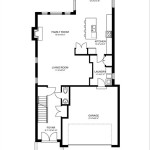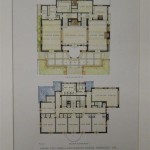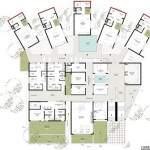Japanese Tea House Floor Plans: An Exploration of Design and Function
Japanese tea houses, known as chashitsu, are more than just structures for preparing and serving tea. They represent a profound cultural tradition rooted in Zen Buddhist principles of tranquility, simplicity, and harmony with nature. Integral to the tea ceremony experience, the floor plan of a chashitsu is meticulously designed to facilitate the ritualistic movements and create a serene, contemplative atmosphere. Understanding the intricacies of these floor plans unveils a deeper appreciation for the cultural significance of the tea ceremony.
The size and layout of a chashitsu can vary, but several key elements are typically present. The most basic design, known as a nijo-daime, measures two tatami mats (approximately 3.6 square meters). Larger tea houses, such as the yojo-daime (four mats) and the hiro-ma (over four mats), offer more space for guests and variations in the ceremony. Regardless of size, the floor plan emphasizes functionality and the creation of a secluded, intimate space.
A crucial aspect of the chashitsu floor plan is the entrance, known as the nijiri-guchi. This small, low entrance, measuring approximately 60cm square, requires guests to stoop upon entering, symbolizing humility and leaving the outside world behind. It also serves a practical purpose, as samurai historically had to leave their swords outside due to the low clearance.
The placement of the ro, or hearth, is another critical element of the floor plan. Located in the floor, the ro is used to heat water for the tea ceremony during the colder months. Its position dictates the arrangement of the other elements within the tea house and influences the host's movements during the ceremony. In warmer months, a portable brazier called a furo is used instead, offering flexibility in the room's arrangement.
The tokonoma, an alcove, plays a significant role in setting the aesthetic tone of the tea ceremony. Located on the wall opposite the guests, the tokonoma typically features a hanging scroll with calligraphy or painting, alongside a carefully arranged flower arrangement or a small, seasonal ornament. These elements are chosen to reflect the specific occasion and evoke a sense of tranquility and harmony.
The mizuya, or preparation area, is an essential component of the tea house, though often partially concealed from view. It is where the host prepares the tea utensils and ingredients before entering the main tea room. The mizuya is designed for efficiency and cleanliness, allowing the host to maintain a sense of calm and order during the preparations.
The arrangement of tatami mats also contributes to the overall design and functionality of the tea house. The specific arrangement of the mats dictates where the guests sit, the placement of the tea utensils, and the path the host takes during the ceremony. The seams of the tatami mats are strategically positioned to guide movement and create visual harmony within the space.
Beyond the core elements, various other features can be incorporated into a chashitsu floor plan, such as waiting areas, gardens, and pathways. These elements further enhance the sense of seclusion and create a transition from the outside world to the serene environment of the tea ceremony.
The design of the chashitsu extends beyond mere functionality. It embodies a philosophy of simplicity, naturalness, and tranquility. The careful consideration of space, light, and materials creates an environment conducive to contemplation and appreciation of the present moment. Studying the floor plans of traditional tea houses reveals the intricate interplay between design and function, reflecting the profound cultural values embedded within the Japanese tea ceremony.
While variations exist in chashitsu design based on region, school of tea practice, and individual preferences, the underlying principles of functionality, simplicity, and harmony with nature remain consistent. Examining the specific arrangements within different tea house floor plans provides insights into the diverse expressions of this rich cultural tradition.
The study of Japanese tea house floor plans offers a valuable window into the aesthetics and philosophy of the tea ceremony. By understanding the placement and significance of each element, one can gain a deeper appreciation for the intricate choreography of the ceremony and the profound cultural values it embodies. From the humble nijiri-guchi to the carefully positioned ro and the serene tokonoma, every aspect of the chashitsu floor plan contributes to the creation of a unique and transformative experience.
Modern interpretations of tea house design often incorporate these traditional principles while adapting them to contemporary needs and settings. Architects and designers continue to draw inspiration from the timeless elegance and functionality of chashitsu floor plans, demonstrating the enduring relevance of this architectural tradition.

Japanese Tea House Plans

Pin By Mohammad Sheikh On Kitchen Ergonomics Traditional Japanese House Tea Floor Plans

Trynagoal Tea House Nano Lucky Interior Design Archdaily

Japanese Cabin Floorplan Tea House Ceremony

Japanese Tea House Architecture Of Ultimate Spiritual World Patterns Design

Japanese Tea Houses All You Need To Know About Chasu

Tea House In Tadotsu Takashi Okuno Associates Archdaily
Kesurokai Japanese Tea House

Japanese Tea House Plans

The Plans A Detailed Photo Record Of Building Japanese Teahouse In








